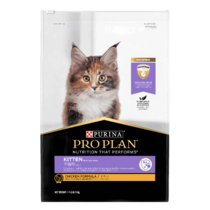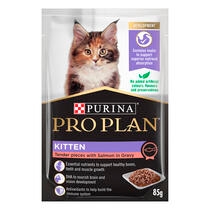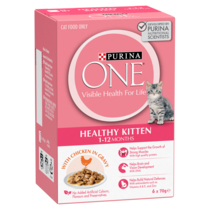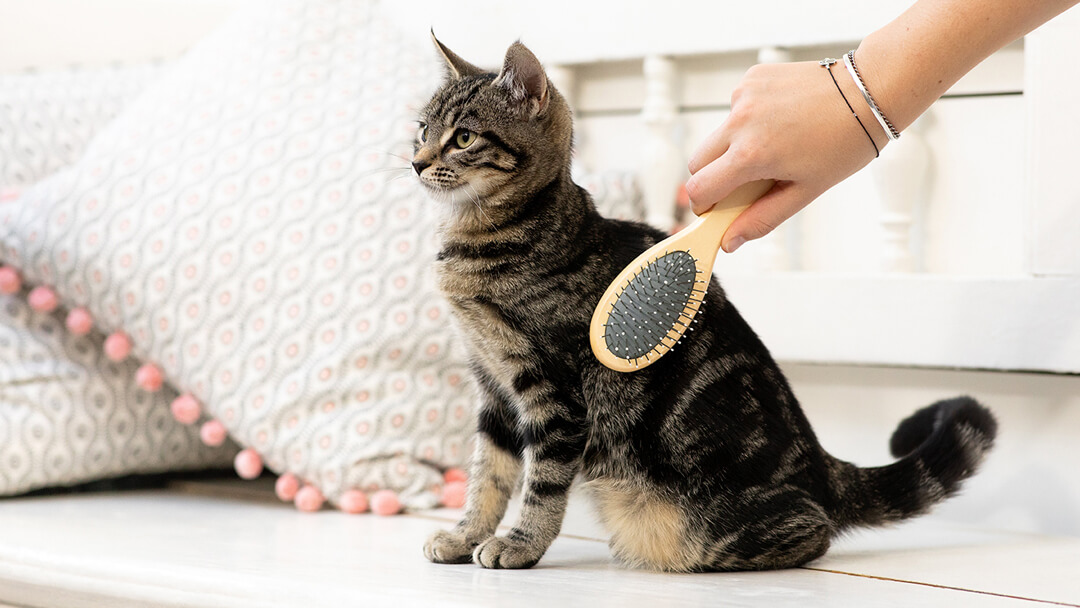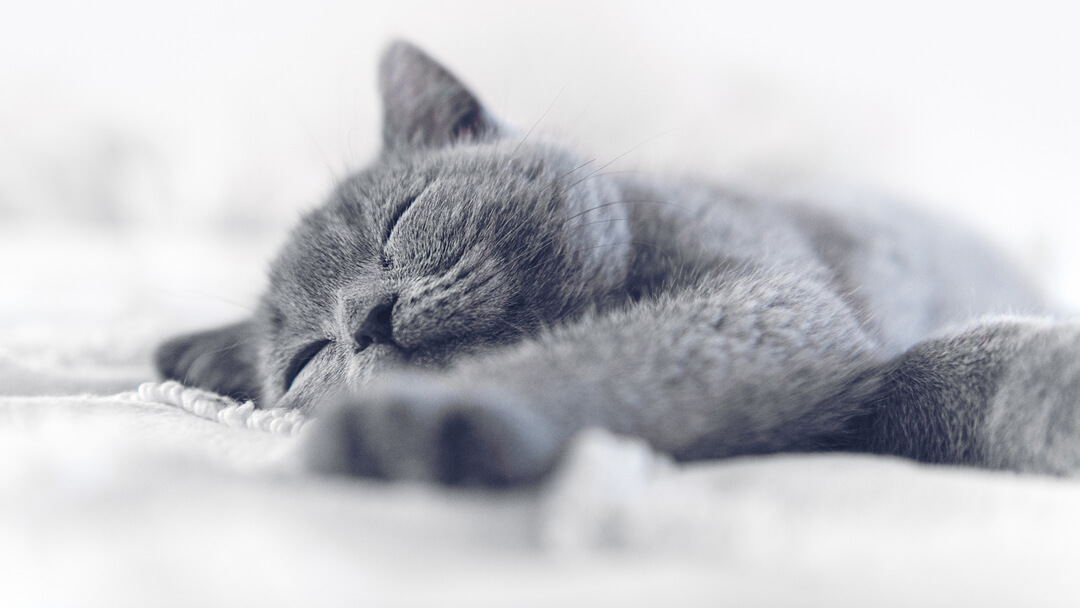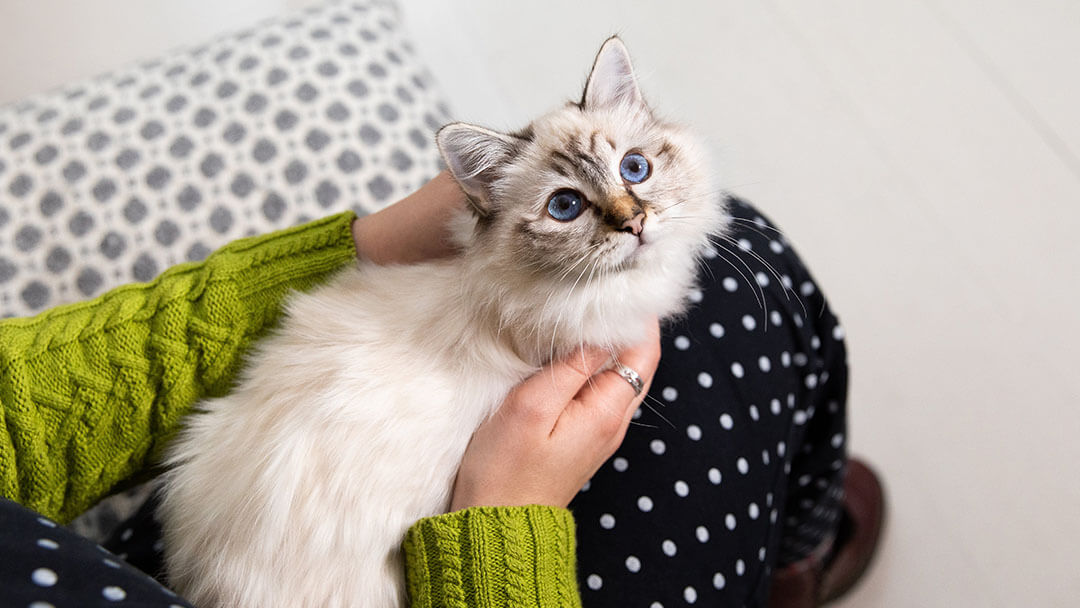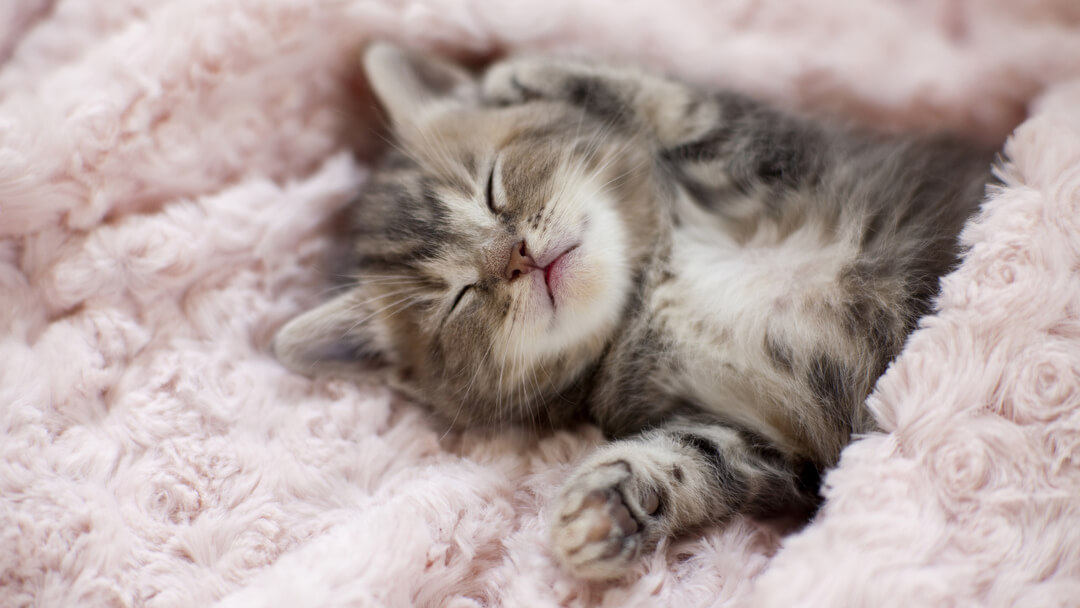

Kitten Care
Every pet owner wants to ensure that they’re properly caring for their pet. It’s a small price to pay for all the love and affection you’ll receive from them. So it’s good to keep these tips in mind for providing ongoing care for your kitten.
Grooming, of course, should be part of your day-to-day routine. And while cats naturally groom themselves, they also need a little help from you. We’ll show you how.
While caring for your kitten’s appearance is important, it’s also important to care for their emotional well-being. One of the most common behaviour issues in kittens is separation anxiety. It can be frightening for a small kitten to be left alone, but there are some simple things you can do to help you kitten adjust to spending time on its own. But there can be other sources of stress for your kitten, too. Even things you wouldn’t think would affect them, like moving to a new house can impact on their health and social confidence. Don’t miss our tips for caring for your kitten, to help make sure your kitten settles securely into life with its new family.
Kitten Grooming
If you start early enough, kittens and cats love being groomed. Most will even learn to come running when they see the brush in your hand
TIPS ON GROOMING
Kittens are perfectly capable of grooming themselves. Their rough tongues are like mini-brushes, removing dead hair and distributing oils through the coat. However, your kitten will still appreciate a helping hand, especially for example, to remove knots from their coat.
Grooming isn’t just about making kittens look good – it removes dead hair, keeps the coat and skin healthy, and offers you an opportunity to build a bond.

BRUSHING
Grooming kittens as early as possible will make them used to the experience and easier to manage in the future. How often you should groom will depend on the breed of your kitten.
Short-coated kittens will only need a quick brush once every week, whereas a long coated breed, such as a Persian, will need daily attention.
• Start by putting your kitten on your lap and brushing gently. Praise her for being good in a quiet and soothing tone of voice.
• After just two minutes, stop brushing and stroke her instead. Offer a treat as an extra reward.
• Repeat several times a day, gradually increasing the length of brushing time.
Kittens may take a bit of time to adjust to their grooming routine. After about five days when your kitten is familiar with the sensation of being groomed, start to groom the belly, tail, ears and other sensitive areas. Be extra gentle and keep the initial session very short. If you notice any signs of boredom or agitation, return to grooming their back.
NAILS
Active healthy kittens rarely need their nails cut as they file their nails outdoors during activities, like climbing trees. However, older or indoor cats will need to have their nails clipped regularly.
Check your cat’s nails, especially the back paws, once a week. If they show when the cat is resting – normally the nails would be completely retracted and tucked away – then they will need trimming.
Ask your vet or groomer to show you how to trim nails properly if you are unsure. Never cut them too short!
When you check the nails, also check the paw pads for any cuts or foreign bodies. Check between the toes for any signs of soreness. Contact your vet if you find anything unusual.
BATHING
While most short-haired cats go through their lives without being bathed, there may be times when they need a quick dip. Long-coated breeds and show cats are bathed quite frequently, so get them used to an occasional warm bath while still young. If you prefer, you can always ask your groomer or vet for help.
• Groom the coat thoroughly so there are no knots. A tangled coat will get 100 times worse when wet.
• Put a rubber mat at the bottom of the sink. You can use the bath, but a sink should be big enough and will save you stooping.
• Half-fill the sink with warm water and attach a nozzle spray to the taps.
• Have your mild cat shampoo and a towel at hand, so everything you need is within reaching distance.
• If you aren’t sure you can cope single-handedly, enlist some help.
• Hold your cat gently but firmly, place in the sink and wet the coat all over.
• Apply the shampoo as instructed and rinse thoroughly.
• Lift the kitten out, wrap a towel around her to remove excess moisture. Finish drying in a warm room.
• Check the water in the sink for any signs of parasites, such as fleas and ticks. If you notice any, both your home and cat may need treating.
• If the coat is very long, it may need blow-drying while brushing it. Your breeder will have included this in the grooming instructions together with any styling details. Keep the dryer away from the skin and on a cool setting, as the skin can burn.
• Don’t let your cat venture outside until the coat is completely dry.
Taking care of your new kitten’s claws, coat and teeth will help to ensure a healthier kitten.

Healthy kitten - Body Condition Checklist
You can spot a healthy kitten by looking out for a few tell-tale signs.
Assessing your kitten’s body condition
Regular home check ups help to identify any early signs of illness. Remember some cats are very good at hiding illness or pain, so you need to be vigilant. If you notice anything out of the ordinary, contact your vet.
Checklist
- Body condition – you should just be able to feel, but not see, your kitten’s ribs. Your pet should have a recognisable waistline and a distinct tummy tuck. Watch for signs of unusual weight loss or gain.
- Ears – these should be clear of any thick brown or black wax and have no smell. For thinly-haired kittens or kittens with white-tipped ears, consider using sunscreen lotion to prevent sunburn.
- Eyes – should be bright and clear, with no redness, discharge or apparent soreness. Shying away from light is a sign it could be hurting the eyes.
- Nose – your kitten’s nose is usually soft and damp to the touch. Nostrils should be free of discharge or crusting.
- Mouth – teeth should be white with no excess tartar, with pale pink or black gums. Dropping food, excess salivation, clawing at the mouth or bad breath are all signs of dental problems.
- Skin and coat – skin can be pink or black, depending on the pigments normally found in your kitten’s skin. There should be no dandruff, fleas, bald patches or sores. The coat should be thick and shiny, with no broken hairs.
- Nails – should be smooth and, if you have an indoor cat, clipped regularly to prevent ingrowing.
- Digestion – occasional vomiting of hair or grass can be normal. However, persistent sickness or choking when eating should be checked out. Make sure your pet’s stools are normal in colour and consistency, with no diarrhoea or constipation.
- Thirst – If you notice any sharp increase in water intake, consult your vet.
- Attitude – kittens that feel unwell often shy away from human contact or act aggressively. Keep a close eye on things, as cats are very good at hiding illness.
Learning about your kitten’s health is one of the best ways to ensure a happy and healthy kitten
Caring For Your Kitten's Teeth
It’s never too early to start looking after your kitten’s teeth. A regular brushing routine can help to prevent tooth decay and gum problems in the future.
Looking after your kitten’s teeth
Eight out of ten cats over the age of three have tooth and gum problems. This is why it’s a good idea to establish a cleaning routine early on in your pet’s life.
The first step is to get kittens used to the mild handling of the face and teeth. Run a soft brush or rubber fingertip applicator across her teeth regularly so she gets used to the contact and taste.
Once she’s comfortable with this routine, discuss with your vet if she’s ready for brushing. Never brush milk teeth!
When you get the ok, begin by washing your hands and pulling back her lips.
Apply the bristles to the teeth at a 45 degree angle and use small circular motions on the outside surfaces.
Start slowly and use special pet toothpaste in tasty flavours.
Kittens tend to accumulate plaque on the outside of their teeth rather than the inside, so be sure to brush here carefully!
It’s important to get rid of plaque as it hardens to form tartar, irritating the gums and causing gingivitis and loss of teeth. Unclean teeth can have a negative impact on many areas of your kitten’s health as bacteria can even enter the bloodstream and damage the kidneys and other organs.

First Visit To The Vet
All kittens will make regular trips to the vet throughout their life. Learn to trust and rely on your vet for any health related pet issue.
Taking kittens to the vet
Regardless of where you get your kitten from, one of the first things you need to do when bringing her home is taking her for a check up with your vet.
Give your vet as much information about your kitten as possible including birth date and any vaccinations she may have had.
During the first visit, the vet will check your kitten over carefully and report on her general health.
Newborn kittens receive antibodies when they nurse from their mothers. Initial vaccination series begin sometime after the kitten reaches six weeks of age and additional vaccinations will be needed later. You vet is the best judge of when the kitten should receive her various shots and will set up an immunisation schedule.
Remember, the vet is one of the most important people in your kitten’s life and selecting the right one is important.
Kitten Vaccines
Before you pick up your new kitten and take it home, make sure that they have had their first vaccination. Kittens should receive there first vaccination between 6 to 8 weeks of age. This first vaccination starts to build your kitten’s defences against any potentially serious diseases.
How do Vaccines work?
Vaccines or vaccinations work by stimulating the animal’s immune system, so that their bodies natural defences are prepared and fully equipped with antibodies to fight against any diseases. Unfortunately if your cat is not properly vaccinated, their bodies’ immune system will not be armed to fight off any virus or bacterial infection.
What is the best Vaccination Schedule?
Kittens usually have a course of three vaccinations, normally given 4 weeks apart: 6 – 8 Weeks First Vaccination – Temporary 10 – 12 Weeks Booster Vaccination 14 – 16 Weeks Final Vaccination
Adult cats require an annual vaccination booster for life. Your vet clinic will send you a reminder a few weeks before your cat is due for their yearly booster.
What do vaccinations protect against?
Cats need to be protected against the below serious and sometime fatal diseases:
- Feline Enteritis – This is the most common disease that affects cats. It is a very contagious and is highly life threatening especially in kittens under 12 months of age. The most common symptoms are: High fever, depression, dehydration, severe stomach pain, vomiting diarrhoea and dehydration.
- Feline Respiratory Disease (Cat Flu) – Cats of all ages can contract this disease as it is highly contagious. Symptoms of this are sneezing, nasal discharge, runny eyes, coughing, loss of appetite and ulcers on their tongues, in their mouths and on their nose, if left untreated this disease can cause severe dehydration.
- Feline Calicivirus- this virus can cause respiratory signs, fever, drooling ulcers of the mouth and footpads, pneumonia, diarrhea, arthritis, and neurologic signs
- Feline Chlamydia – Chlamydia is an organism that causes eye disease, it is most commonly seen in young kittens under 9 months of age. The symptoms Chlamydia are discharge from the eyes and nose, sore red eyes, high temperature, coughing, heavy breathing, enlarged lymph nodes, loss of appetite, sudden weight loss and depression.


